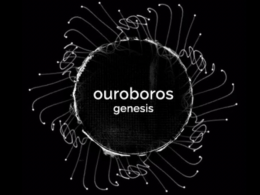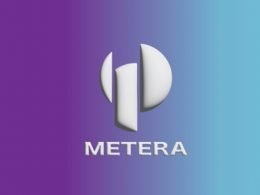On July 3, 2025, IOHK announced Project Acropolis, a transformative initiative to make Cardano’s blockchain more accessible to developers by reengineering its node architecture IOHK blog post. This project aims to lower technical barriers, streamline decentralized application (DApp) development, and position Cardano as a leading platform for innovation in decentralized finance (DeFi), gaming, real-world finance (RealFi), and artificial intelligence (AI). As Cardano progresses through its Basho (scalability) and Voltaire (governance) phases, Project Acropolis aligns with the network’s vision of a scalable, sustainable, and community-driven digital economy. The Cardano community, active on platforms like X and the Cardano Forum, has embraced Acropolis with enthusiasm, seeing it as a catalyst for ecosystem growth. This article explores the project’s origins, objectives, technical framework, and potential impact, drawing on IOHK’s announcement and community sentiment.
The Genesis of Project Acropolis
Cardano, launched in 2017, is renowned for its research-driven approach, pegged on peer-reviewed development and a layered architecture that separates computation (smart contracts) from settlement (transactions). Its development phases, Byron (foundation), Shelley (decentralization), Goguen (smart contracts), Basho (scalability), and Voltaire (governance) have helped build such a stable and scalable blockchain over time. The Chang hard fork in September 2024 introduced on-chain governance, empowering ADA holders to vote on network proposals, a cornerstone of the Voltaire phase.
Despite these advancements, Cardano’s unique Extended Unspent Transaction Output (EUTxO) model and Plutus smart contract platform can be challenging for developers accustomed to account-based systems like Ethereum’s. Recognizing this, IOHK launched Project Acropolis to “break down the walls” of complexity, making Cardano’s infrastructure more intuitive and developer-friendly. The project focuses on reimagining the node architecture, which is the backbone of Cardano’s operations, to simplify DApp development and enhance scalability, aligning with the ecosystem’s growing demand for DeFi, gaming, and real-world applications.
Objectives of Project Acropolis

According to IOHK, Project Acropolis aims to transform Cardano into a platform where developers of all skill levels can build efficiently. Its key objectives include:
- Simplifying Developer Experience: Acropolis seeks to reduce the complexity of building on Cardano by providing intuitive tools and abstractions. The blog highlights that the project will introduce “simplified APIs and developer-focused interfaces” to make node interactions more straightforward. This approach will enable developers to focus on creating DApps rather than mastering Cardano’s technical nuances.
- Optimizing Node Performance: The project aims to enhance the efficiency of Cardano’s nodes, which validate transactions and execute smart contracts. By reducing resource requirements, Acropolis supports the Basho phase’s scalability goals. It does so by ensuring the network can handle increased transaction volumes as the ecosystem grows.
- Accelerating Ecosystem Growth: By lowering barriers to entry, Acropolis is designed to attract a diverse developer community, from independent coders to enterprises. IOHK envisions that this will unlock a wave of innovatio. A new dawn where we see more DApps in DeFi, gaming, RealFi, and AI, such as Cornucopias, Empowa, and Singularity.
- Enhancing Scalability and Interoperability: Acropolis supports Cardano’s sidechain framework, such as the Vola Partner Chain, by optimizing node interactions for off-chain computations and main-chain settlement. This improves interoperability with other blockchains, aligning with Cardano’s multi-chain vision.
- Supporting Community Governance: With the Voltaire phase enabling on-chain governance, Acropolis ensures that nodes are accessible to a broader range of stakeholders, facilitating participation in voting and decision-making processes.
A Look into Acropolis’ Technical Framework
The IOHK blog provides specific insights into Acropolis’s technical approach, which centers on re-engineering Cardano’s node architecture. Key components include:
- Modular Node Architecture: Acropolis introduces a modular design, allowing developers to run lightweight nodes tailored to specific tasks, such as DApp development or transaction validation. This reduces the need for full ledger synchronization, lowering computational demands.
- Simplified APIs and SDKs: The project includes new APIs and software development kits (SDKs) that abstract complex processes, such as interacting with the EUTxO model. IOHK notes that these tools will support “a broader range of programming languages,” making Cardano more accessible to developers familiar with languages like JavaScript or Python.
- Plutus Enhancements: Plutus, Cardano’s Haskell-based smart contract platform, is a focus of Acropolis. The project aims to provide libraries and templates to simplify Plutus development, addressing the learning curve associated with functional programming.
- Integration with Hydra: Acropolis complements Cardano’s Hydra scaling solution, which uses state channels for off-chain transaction processing. Optimized nodes will enhance Hydra’s efficiency, supporting high-throughput DApps without compromising security.
- Interoperability Support: The blog emphasizes that Acropolis will streamline interactions with sidechains like Vola, enabling seamless cross-chain transactions and expanding Cardano’s interoperability with other blockchain ecosystems.
These technical advancements aim to create a developer-friendly environment while preserving Cardano’s security and decentralization.
Impact on the Cardano Ecosystem
Project Acropolis has the potential to reshape Cardano’s ecosystem in several ways:
- Surge in DApp Development: Simplified APIs and Plutus enhancements will accelerate DApp creation, boosting projects like DexHunter (DeFi), Cornucopias (gaming), and Empowa (RealFi). IOHK predicts a “wave of new applications” as developers use Acropolis in their projects.
- Broader Adoption: By attracting diverse developers, Acropolis could draw enterprises and startups to Cardano, expanding its real-world impact. Projects like World Mobile, which connects underserved communities, may benefit from faster development cycles.
- Enhanced Scalability: Optimized nodes support Cardano’s scalability goals, enabling the network to handle higher transaction volumes. This is critical for competing with high-throughput blockchains like Solana.
- Strengthened Governance: Acropolis’s accessible nodes facilitate broader participation in Cardano’s governance, aligning with the Voltaire phase’s community-driven model.
- Global Impact: By enabling developers to build solutions for underserved regions, Acropolis amplifies Cardano’s mission of financial inclusion, supporting projects like Empowa and World Mobile.
Recent milestones, such as the Chang hard fork and partnerships with Binance and Chainlink, amplify this optimism, with Acropolis seen as a natural extension of Cardano’s momentum.
Despite its promise, Acropolis could face challenges such as:
- Implementation complexity: Redesigning node architecture requires rigorous testing to avoid disruptions. IOHK’s research-driven approach mitigates this, but delays could temper expectations.
- Adoption lag: Developers may need time to adapt to new tools, particularly those unfamiliar with Cardano’s ecosystem. IOHK’s emphasis on language support aims to address this challenge.
The Road Ahead
IOHK plans to roll out Acropolis incrementally, with beta programs for developers expected in late 2025 and full implementation targeted for 2026. Key milestones include:
- Beta Testing: Developer beta programs will test new APIs and nodes, refining features based on feedback.
- Integration with Projects: Acropolis will be tested with existing DApps like Djed and Cornucopias, showcasing its impact.
- Community Involvement: Cardano’s governance model allows the community to influence Acropolis’s development through proposals, ensuring alignment with user needs.
Final Thoughts
Project Acropolis marks a pivotal moment for Cardano, addressing developer accessibility while advancing scalability and governance. By reengineering node architecture, introducing simplified APIs, and enhancing Plutus, Acropolis empowers developers to build innovative DApps. The community’s excitement, evident on X and the Cardano Forum, reflects its potential to drive ecosystem growth and global impact. As Cardano builds on milestones like the Chang hard fork, Acropolis positions it as a leader in blockchain innovation, creating a future where developers and communities shape a decentralized digital economy.










